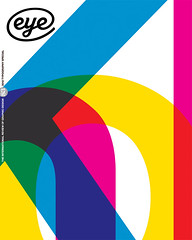Summer 1994
Let’s not forget about culture
TED5
Monterey, California<br>24-27 February 1994The TEDS conference, ‘information architect’ Richard Saul Wurman’s fifth technology/entertainment/design extravaganza, was a mixture of crude salesmanship and genuine revelation. Speakers approached the event either as a sincere gathering of minds, or as a tradeshow convention. Fortunately, the thoughtful presentations outnumbered the product demonstrations.
The conference has been building its own country-club mythology over the past five years by making attendance fees extraordinarily high (500 for registration only, plus travel, food and accommodation). Thus there was preponderance of executive-level conferees and only a handful of designers, which is exactly what Wurman wants. Yet the very marginal role of design, particularly of the aesthetic and stylistic issues that dominate so many gatherings, is what makes this conference interesting for designers. By inviting high-tech visionaries (Jaron Lanier) next to people who draw (children’s book author David Macauley), make music (Herbie Hancock) and entertain (magicians Penn and Teller). TED manages to portray ‘design’ as a broad-based activity that has more to do with communication that with visuality.
Perhaps the scarcity of compelling visual form was such a revelation. Cooper presented work by graduate students at the Visible Language Workshop at MIT, which showed how typography and graphics might operate in the four-dimensional space of multimedia. The most stunning of these projects allowed the user to fly through a virtual library/card catalogue, encountering layer upon layer of textual depth through the elegant metaphor of high-speed travel. The MIT projects made much contemporary print design look like a crude freeze-frame relics and quickened the hearts of many people who felt tat they were at last witnessing something truly new and conceptually, technologically and visually sophisticated.
The MIT projects suggested a total re-imaging of book and database paradigms, which was all the more striking against the backdrop of so many new media materials that looked like back-lit books (Bob Stein’s Voyager title Macbeth) or stupidly ‘advanced’ arcade games (Trip Hawkins’ 3DO games). The icon-based, cartoon-style interface seemed to be an established fact for many presenters and there was an annoying assumption of what constitutes a ‘friendly’ environment. General Magic’s personal digital assistant used nostalgic. Main Street-type imagery, complete with a columned post office and ye olde storefronts with signs announcing ‘America On-Line’.
Perhaps the most intriguing figure at the conference was virtual reality pioneer Jaron Lanier, who was allowed only a cameo appearance but was brought back by popular demand when Stephen Jay Gould’s absence opened up some extra time. Lanier breathlessly touched on a series of social and political implications of media that brought the conference back down to earth. He seemed to be the only speaker concerned with the ethics of technology and attuned to its darker side.
Characteristic of the sunny side was Chris Whittle’s breezy presentation, which suggested nothing less than a total reorganisation of American education. Whittle did a variation on his ‘report to the board’ and then sailed out of the door. His talk completely failed address the social implications of his controversial ‘Edison Project’ in which he is redesigning some 30 schools from their administrative structure and textbooks to the role of computers (one in the classroom ad one at home for every student).
The conference has been criticised in the past for the scarcity of women presenters. The disparity is especially conspicuous at TED because women play such a major role in the high-tech industries, especially in the realm of interface design. Muriel Cooper, Ellen Lupton and consultant designer Nancye Green were the only scheduled women speakers, though singer Hazel Miller provided beautiful musical interludes throughout and writer Gloria Nagy (Wurman’s wife) filled in when Stephen Jay Gould had to cancel. No women were invited back for the more informal discussion periods in which selected groups of speakers gather on stage.
This is not so much a harangue for equal representation as a call for balance in the tenor of the conference. Ellen Lupton’s domestic view of technology and Nancye green’s semi-autobiographical presentation were welcome contrasts to everything that had preceded them. What is happening at the TED conference is vital, but it needs to add culture to its technology/entertainment/design triad. In so doing it could make political, social and ethical issues rub shoulders with business.
Abbott Miller, designer, Pentagram, New York
First published in Eye no. 13 vol. 4 1994
Eye is the world’s most beautiful and collectable graphic design journal, published quarterly for professional designers, students and anyone interested in critical, informed writing about graphic design and visual culture. It is available from all good design bookshops and online at the Eye shop, where you can buy subscriptions and single issues.

